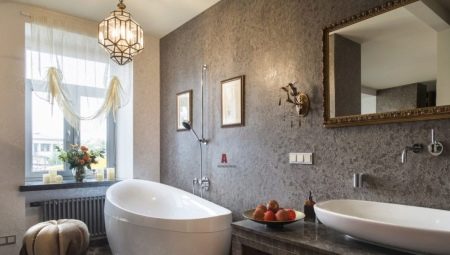A bathroom is usually tiled; however, a more interesting design can be made. Decorative plaster has long been used in rooms with high humidity. Such walls look unusual and modern. The bathroom is literally transformed, you just need to choose the right composition.
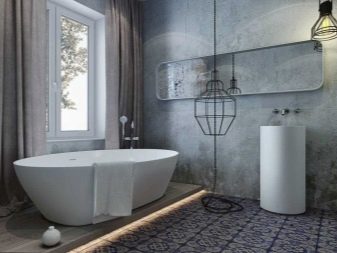
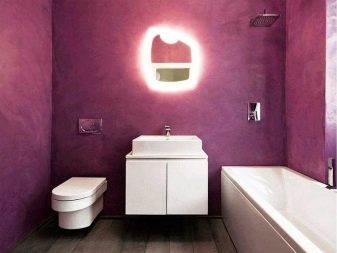
Advantages and disadvantages
Decorative plaster for the bathroom is a complete decoration material. The basic composition is selected based on the material of the walls, but the finish contains dyes and additional elements to create a texture. Advantages of decoration.
- Each time the design will be exclusive, even if the work was carried out by one master with the same composition. The drawing is simply impossible to repeat.
- Even small skills are enough to create an unusual texture from plaster for walls.
- If the walls get dirty, you can just wash them.
- Decorative plaster for a bathroom waterproof. Wear-resistant material does not lose its attractiveness during operation.
- Plaster for internal work does not emit toxic substances, it is safe for health.
- High vapor permeability allows you to maintain a stable microclimate in the bathroom.
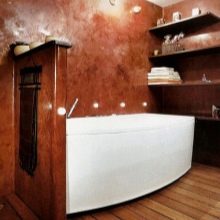
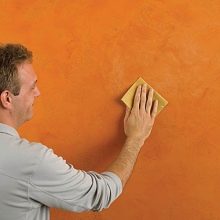
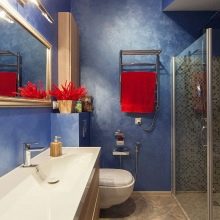
Modern technology allows you to use such a high-quality finish instead of the usual tiles.
The material allows not only to create beauty, but also to hide small wall defects. Although even he has flaws.
- The material is quite expensive. This is especially true of elite compounds with intense pigments and pronounced textures.
- Moisture-resistant coating is difficult to remove from the walls, so the choice should be approached as thoughtfully as possible.
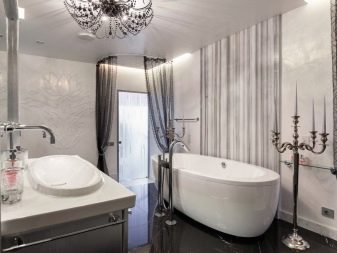
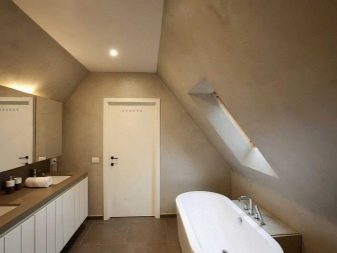
Kinds
Decorative plaster is divided into types according to many criteria. Each variety differs in properties. Moreover, all the compositions can be conditionally divided according to the relief.
- Smooth. After application, the wall becomes just plain. This large group includes Venetian, glossy, smooth plaster. It is this option that is more common in the bathroom.
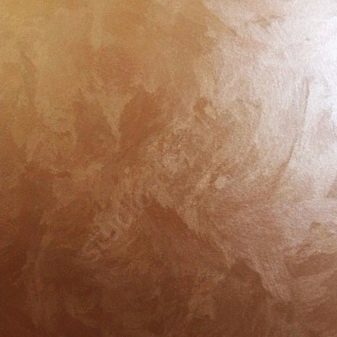
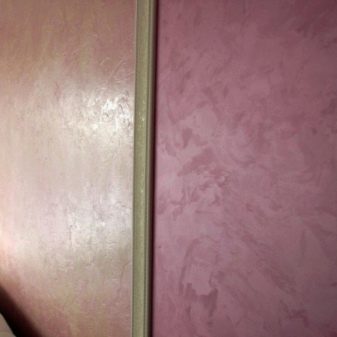
- Structural. On the surface of the walls creates a three-dimensional relief. The coating can be modeling, with uniform additives and combining roughness with grooves. The disadvantage of such a coating for the bath is the complicated care.
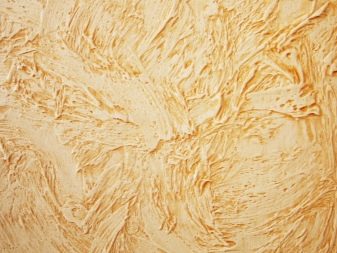
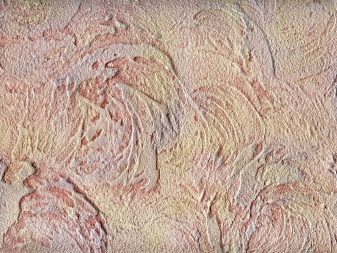
Venetian
Finishing gives the interior sophistication and luxury. Commonly used in styles such as rococo, baroque, classic. Venetian plaster imitates a covering by a stone. Application requires certain skills, because in order to achieve the desired result you will have to apply 5-10 layers.
Each layer should differ in shade. The composition quickly sets on the wall, so work should be carried out quickly. If necessary, you can wax this plaster, then it will repel water.
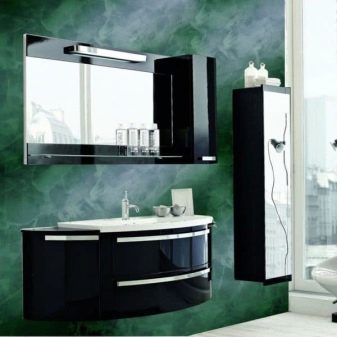
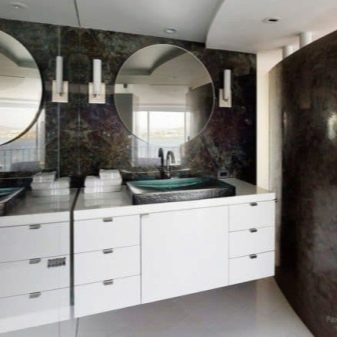
Sanitizing
This type of plaster evens the walls, creates a decorative coating and a waterproofing layer. Designed for rooms with high humidity. The only drawback is that it cannot be used on gypsum walls. Plasters of this type can have a different composition. Usually, one layer of the base porous coating is first applied, the second is sanitizing.
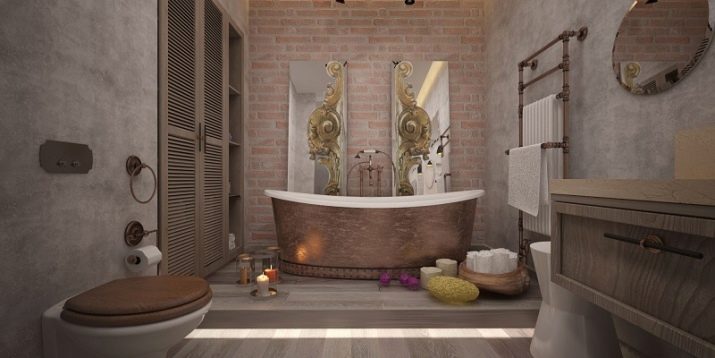
It is noteworthy that the plaster creates a waterproofing layer and prevents the precipitation of sulfate salts, the appearance of efflorescence. This compares it favorably with other cement-sand compositions. A protective reaction is manifested in this way.
- Moisture is directed from the load-bearing wall to the porous layer. Sulfate salts are retained there in the pores.
- The liquid evaporates through the micropores of the second layer.
- The last layer of plaster dries and creates a special film, which prevents the penetration of moisture into the room.
The topcoat is usually made decorative, applied over a sanitizing plaster. In this case, you can create a design in any color and style. It is not necessary to cover the walls with varnishes and other additional materials.
Moreover, such actions will degrade the properties of the plaster.
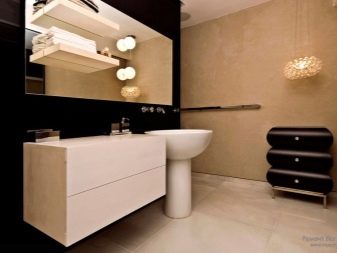
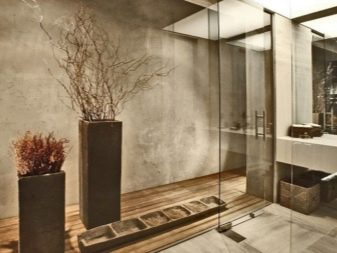
Front
This type of plaster is much less commonly used in the bathroom. The rough structure only suits some interior styles. The material is quite difficult to choose so as to be sure of its non-toxicity. Facade plasters are for external use, not internal.
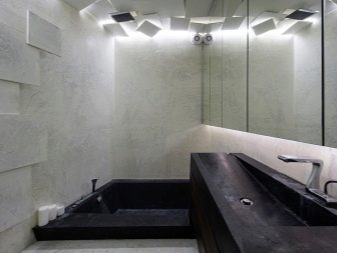
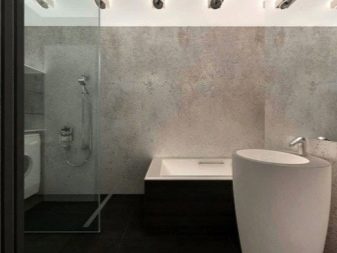
How to choose?
Decorative plaster in the bathroom is subjected to special aggressive influences. Indoors, temperature and humidity levels constantly change. This must be taken into account when choosing a composition. Only waterproof plaster is suitable for the bathroom. Additionally, it is worth paying attention to such nuances.
- The compositions can be either dry or ready to use.. It is recommended to purchase the first option. So the mixture can be diluted to the desired density so that it is convenient to work with.
- Plaster with large decorative elements should be taken only if if you have experience in decorating or it is planned to attract a specialist. In other situations, this choice will be only trouble. It is difficult to work with the coating.
- Water-based decorative plaster is not suitable for the bathroom. Without additional waxing, such a composition will not be able to withstand external conditions. If you coat the plaster with wax or varnish, then the vapor permeability will disappear.
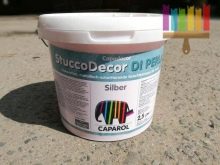
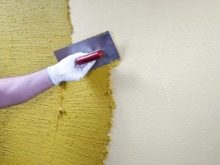
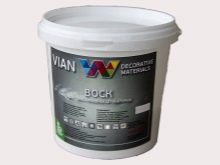
Application Techniques
Finishing work requires some skills. Before starting the design of the walls, it is recommended to practice on a small area in order to confidently and quickly wield tools.The mixture quickly freezes on the walls and it will be difficult to correct mistakes. Before decorating, you need to prepare the surface in this way.
- Remove previous trim.
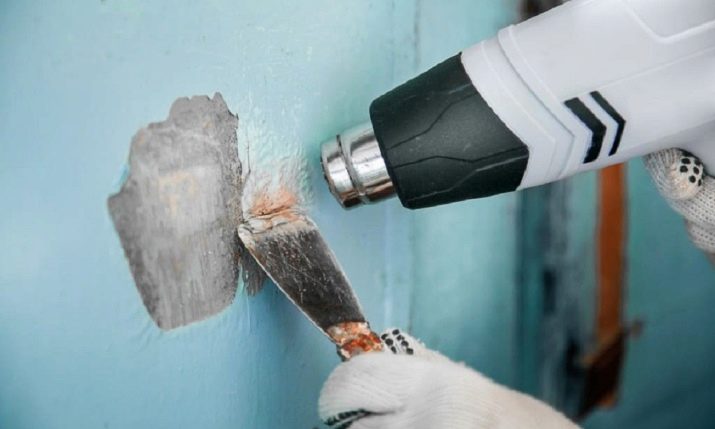
- Make a spray that is, apply the first coat of material. Moisten the wall with water and apply the solution. The first layer should be about 5 mm thick. You do not need to level it. If the wall is wooden, then the spray should be made 9 mm thick.
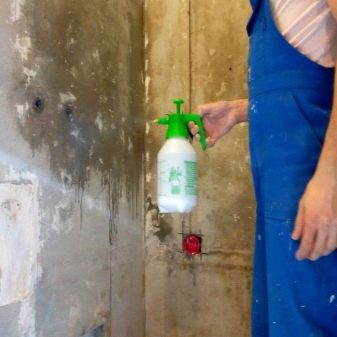
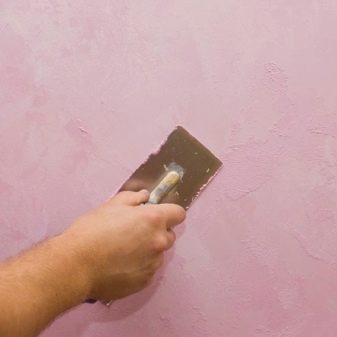
- Apply a rough coat. The exact thickness depends on the composition of the plaster, varies between 5-7 mm. When applying, use a grater of 70–100 mm in length. This layer must be even.
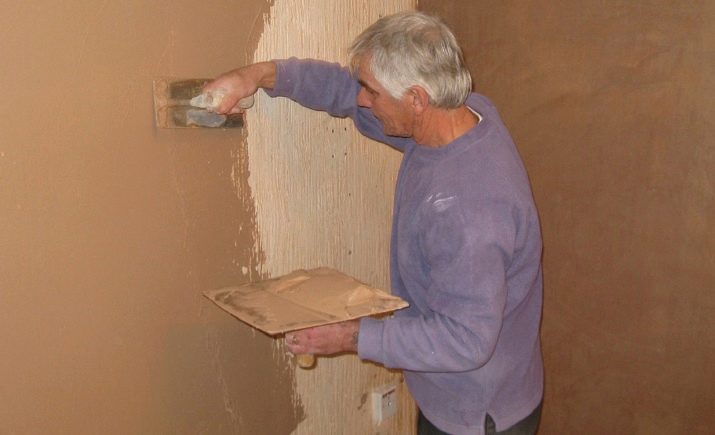
- Before applying the last coat, the wall must be dampened. The composition is applied to the edge of the spatula and transferred to the wall with a thin layer at an angle of 10-15 °. Relief and drawings can be done until the plaster dries.
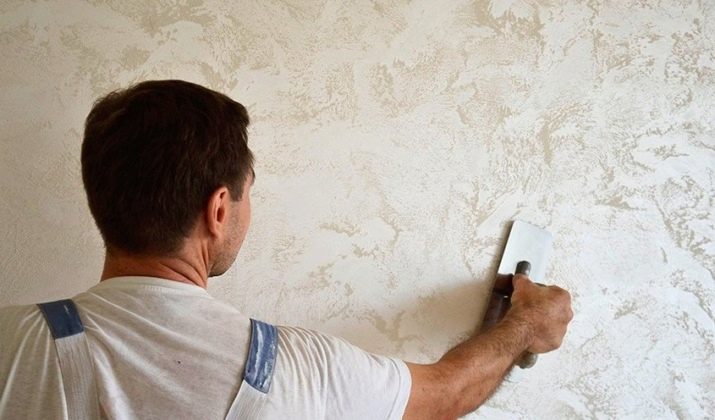
The finish layer is decorative. It will take about 2-3 days to dry.
This period cannot be used for the intended purpose of the bathroom so that the coating does not fall off.
Additional materials allow you to create an interesting relief on the walls.
- Homogeneous grungy. You need to take a soft foam sponge and place it in a plastic bag. A crumpled newspaper is an alternative. An impromptu tool is necessary to process the entire surface of the wall. Touch should be light, not pressing.
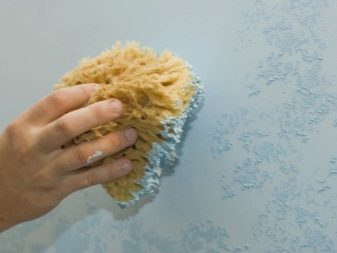
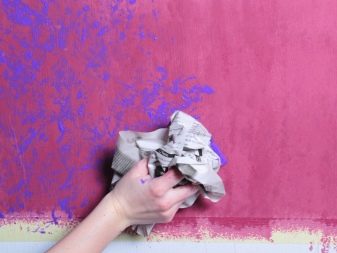
- Grungy with furrows. To create such a decorative layer, you need a bark beetle plaster. The result is an imitation of thin wood. The effect is due to the fact that marble contains granules and other stone chips in the plaster. The size of the picture directly depends on the size of the additional elements in the mixture.
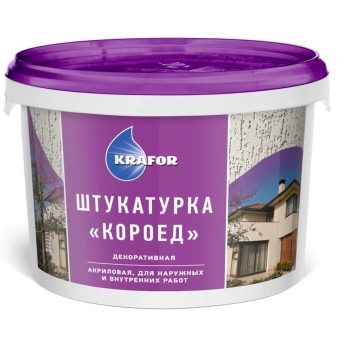
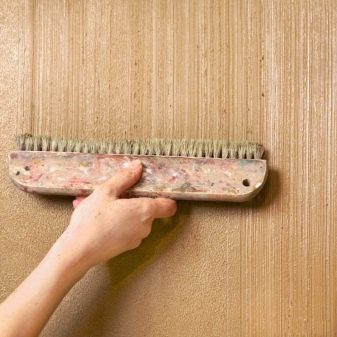
- Furrowed. This technique allows you to imitate the masonry of bricks or stones. It is necessary to take a spatula of a suitable size and create a relief on a non-dried coating.
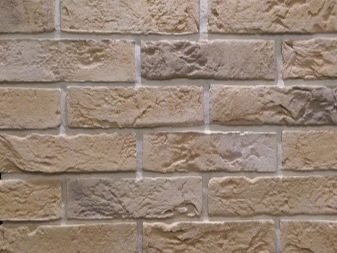
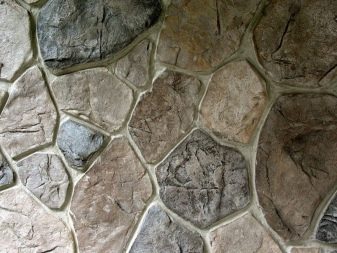
- Venetian. This decor is achieved by mixing mixtures of different colors. Design is considered the most complex, elite and expensive.
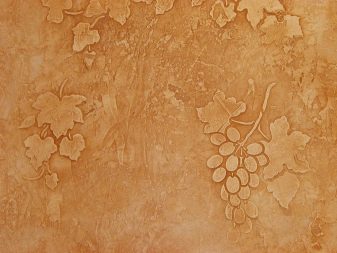
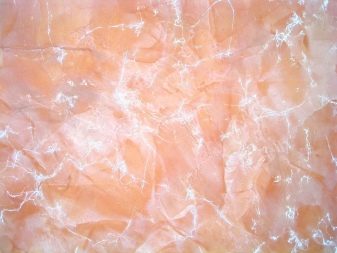
The most universal relief of decorative plaster is considered to be “bark beetle”. The composition is mixed with stone granules with a size of 1.5-2.5 mm. Features of wall covering.
- Plaster without additives is applied on a flat wall. The decorative layer needs to be leveled.
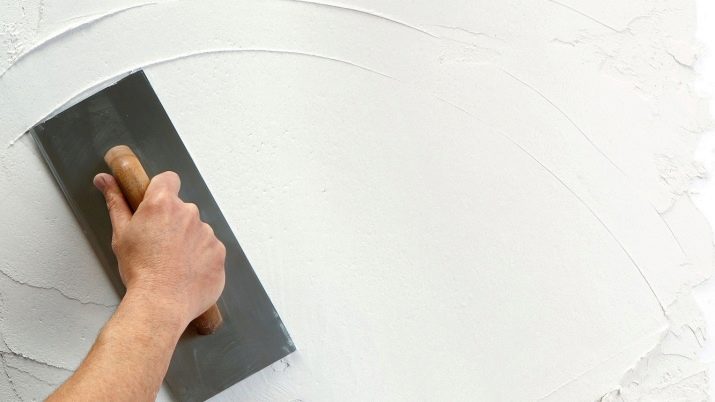
- Hard granules must be applied to the surface. a thin, uniform layer.
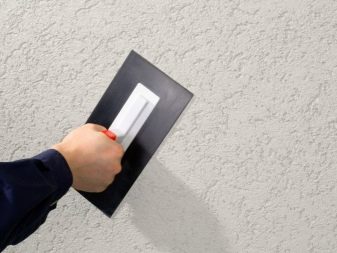
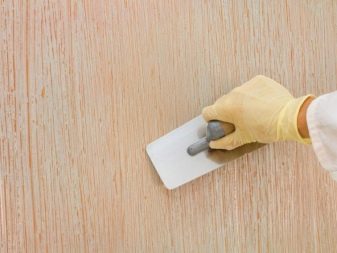
- As soon as the composition starts to set, you need to level it with a building grater. During processing, hard grains scratch the plaster, and a relief is created.

- It is important to choose the direction of hand movement in advance. The picture depends on this. If you change the nature of mashing during processing, the furrows will change dramatically.
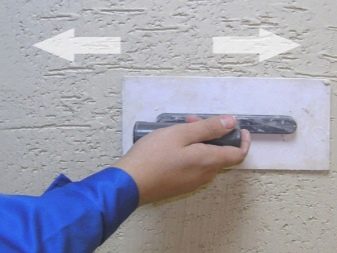
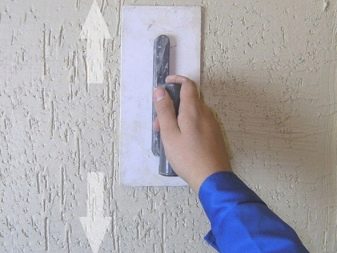
Decorating with decorative plaster has nuances associated with the material of the walls. The drying time of the composition also depends on the surface.
Important features.
- It is best to use decorative plaster for processing concrete walls. On this material, the composition dries faster. Wooden or metal walls will require a long wait after applying the mixture.
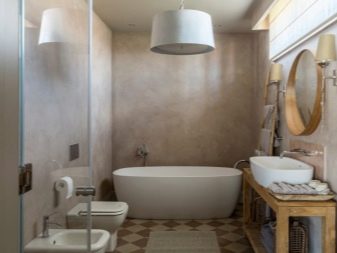

- The concrete surface must first be leveled with a gypsum mixture. If there are colored spots on the wall, it is better to pre-paint them with white water-based paint.
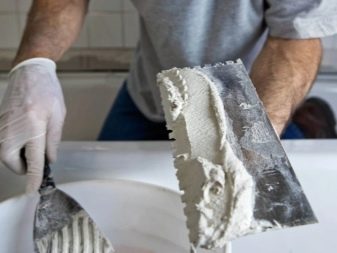
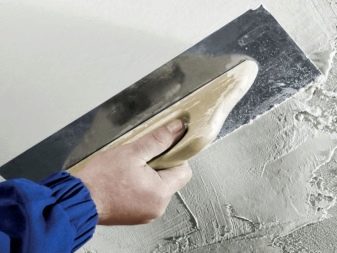
- Drywall wall must be pre-plastered. Particular attention should be paid to the corners and joints. The surface should eventually become perfectly flat.
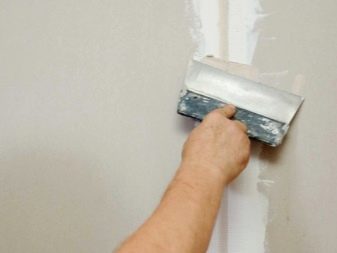
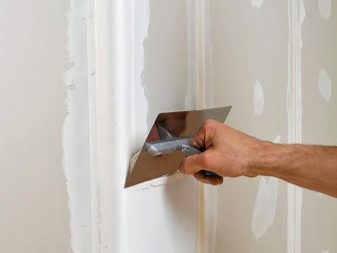
- Wood walls should be painted with oil paint.
Such a simple action will protect the surface from deformation due to moisture or other external influences.
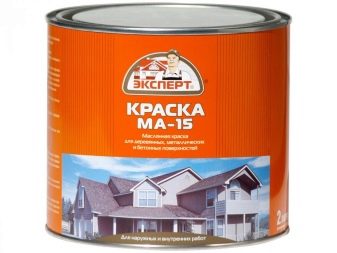
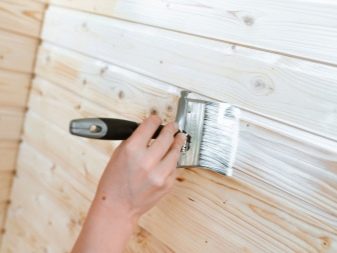
Beautiful finishes
Decorative plaster allows you to create a bathroom design in many styles. Such material looks best in a modern design, however, and the classic interior can be supplemented with such a composition. Beautiful examples.
- Decorative plaster looks great when designing a bathroom in the loft style. It goes well with tiles.
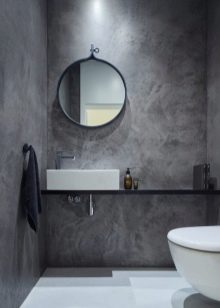


- The warm bark beetle relief makes the bathroom particularly comfortable. To create this design, the solid granules in the mixture must be large.
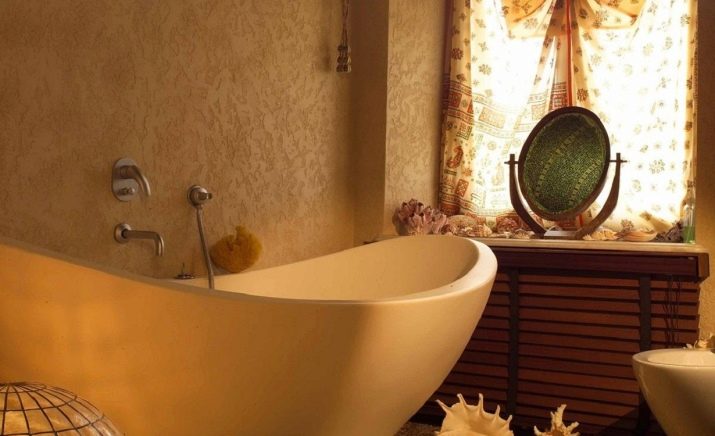
- Venetian plaster in itself is excellent. The pattern on the wall is made of the same material and looks harmonious.
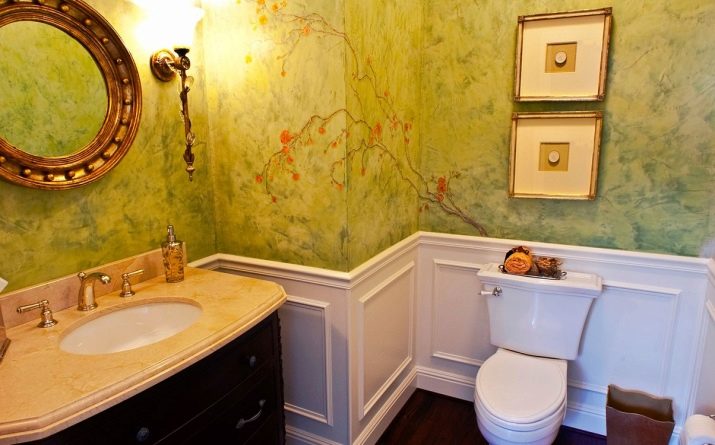
- A small bathroom seems more spacious thanks to the right choice of plaster for walls. This type of Venetian design requires certain skills.
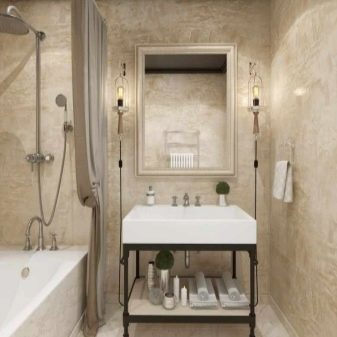
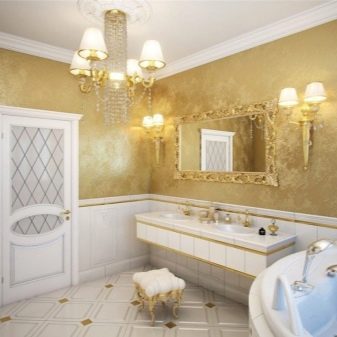
For more information about decorative plaster for the bathroom, see the next video.
